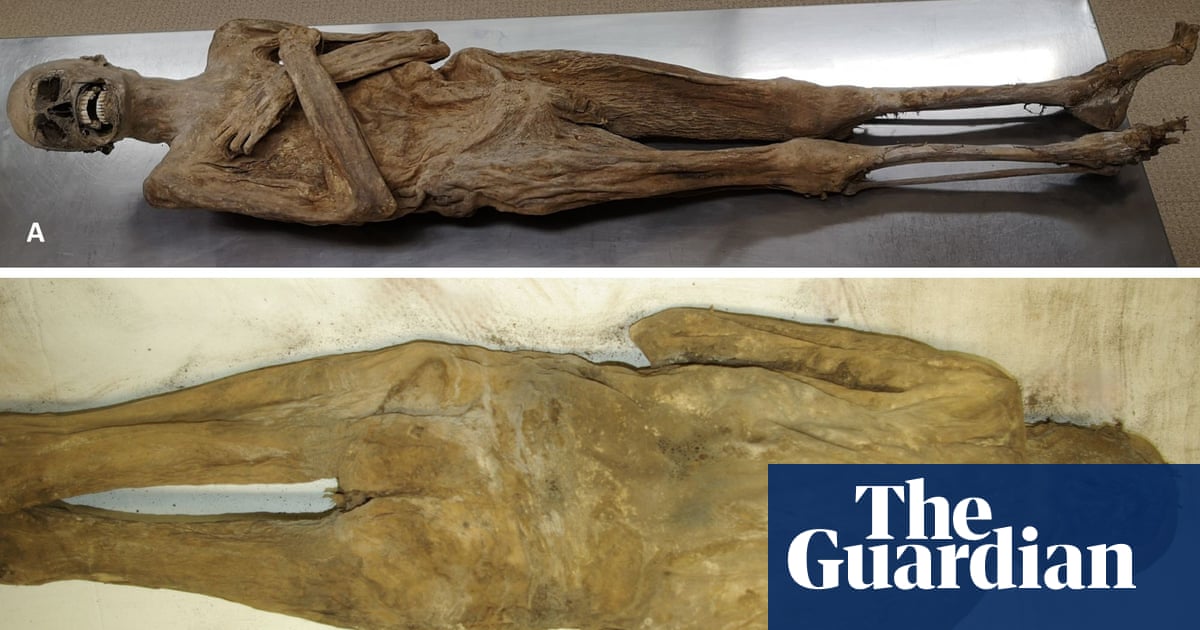The mystery of a mummy from an Austrian village has been solved, according to researchers who say it was embalmed in an unexpected way – via the rectum.
Intrigue had long swirled around the mummified body stored in the church crypt of St Thomas am Blasenstein. The remains were rumoured to be the naturally preserved corpse of an aristocratic vicar, Franz Xaver Sidler von Rosenegg, who died in 1746 at the aged of 37, gaining the mummy the moniker of the “air-dried chaplain”.
Now experts say they have discovered the body was embalmed with the abdominal and pelvic cavities packed with wood chips, fragmented twigs, fabrics such as hemp and silk, and zinc chloride – materials that would have absorbed fluids inside the body.
Dr Andreas Nerlich, a pathologist at Ludwig Maximilian University of Munich in Germany and first author of the study, said the discovery was a surprise as there was no external evidence for such a process.
“The body wall was not opened – therefore the only entrance possible was the rectum,” he said, noting this was very different from previously known methods of embalming, including those from ancient Egypt.
Writing in the journalFrontiers in Medicine, Nerlich and colleagues reported how the mummy had previously been externally examined by experts and studied via X-rays among other investigations. While the X-rays did not detect the internal stuffing, they did reveal a round structure inside the mummy’s left lower bowel – leading to rumours that the individual had died after swallowing a poisonous capsule.
During a recent renovation of the crypt, Nerlich and colleagues gained approval to carry out a partial autopsy, CT scans and other analyses. The researchers discovered the mummy – which has a well-preserved upper body, but decay to the face, lower legs and feet – is that of a man, most likely between 35 and 45 years of age, with radiocarbon dating of a skin sample suggesting he died between 1734 and 1780.
The team note these insights fit with what is know about Sidler, adding that an analysis of bone, tooth and skin samples revealed the man’s diet was consistent with that of a local parish vicar in the region, being rich in animal products and central European grain varieties.
As expected for a man of the cloth who had an easy life, the skeleton showed no signs of stress – while the corpse showed evidence of long-term pipe-smoking and bunions. “Both wearing pointy shoes and smoking [a] pipe are very typical for a priest at that time,” said Nerlich.
As for the “poisonous capsule”, the researchers discovered the object was a single glass bead – similar to those used for rosaries – that may have entered the body as a decoration on the fabric used for stuffing.
Sidler’s cause of death, the team added, was most likely severe bleeding into the lungs as a result of tuberculosis, with the body showing signs of the disease.
Yet why Sidler was embalmed remains unclear. While the team said the evidence suggests it was carried out to avoid the spread of infection by miasma – or “bad air” – Nerlich said another potential explanation was that Sidler was preserved for transport to his home monastery of Waldhausen.
And he may not have been the only one to receive such treatment. “This is the first case with this type of documented embalming,” Nerlich said. “So we have no idea how often or where this has been performed, although we assume that this type of ‘short-term preservation’ was used much more often than we might expect from this single case.”
